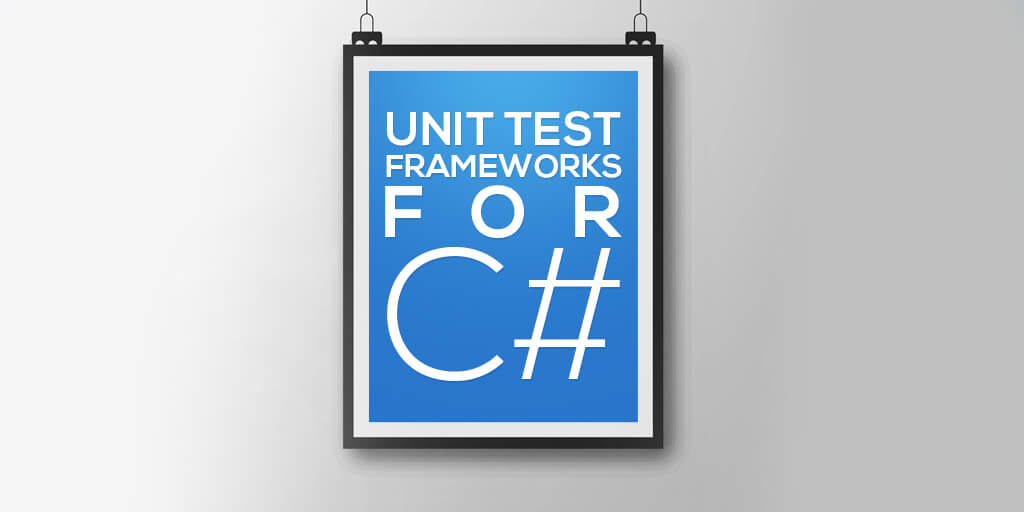-->
- Npm Run Test Unit
- Unittest Runner Rug
- I'm Using Resharper To Run Individual Tests In IDE, But Nunit-console To Run All Tests For Speed.
- Python Unittest Runner
This tutorial takes you through an interactive experience building a sample solution step-by-step to learn unit testing concepts. If you prefer to follow the tutorial using a pre-built solution, view or download the sample code before you begin. For download instructions, see Samples and Tutorials.
I've got it run in another setup, it's about 6 times slower than MBUnit GUI and I've got so many test, Test Driven.NET addon. This is great little tool but just for testing one or unit test, doesn't provide a good or VS.NET independent GUI; I'm open to any other free test runner which works with or independent from VS 2008. A unittest test runner that can save test results to XML files in xUnit format. The files can be consumed by a wide range of tools, such as build systems, IDEs and continuous integration servers. Unittest has the concept of sub-tests for a unittest.TestCase; this doesn't map well to an existing.
This article is about testing a .NET Core project. If you're testing an ASP.NET Core project, see Integration tests in ASP.NET Core.
Prerequisites
- The .NET 5.0 SDK or later
Create the source project
Open a shell window. Create a directory called unit-testing-using-mstest to hold the solution. Inside this new directory, run dotnet new sln to create a new solution file for the class library and the test project. Create a PrimeService directory. The following outline shows the directory and file structure thus far:
Make PrimeService the current directory and run dotnet new classlib to create the source project. Rename Class1.cs to PrimeService.cs. Replace the code in the file with the following code to create a failing implementation of the PrimeService class:
Npm Run Test Unit

Change the directory back to the unit-testing-using-mstest directory. Run dotnet sln add to add the class library project to the solution:
Create the test project
Create the PrimeService.Tests directory. The following outline shows the directory structure:
Make the PrimeService.Tests directory the current directory and create a new project using dotnet new mstest. The dotnet new command creates a test project that uses MSTest as the test library. The template configures the test runner in the PrimeServiceTests.csproj file:
The test project requires other packages to create and run unit tests. dotnet new in the previous step added the MSTest SDK, the MSTest test framework, the MSTest runner, and coverlet for code coverage reporting.
Add the PrimeService class library as another dependency to the project. Use the dotnet add reference command:
You can see the entire file in the samples repository on GitHub.
The following outline shows the final solution layout:

Change to the unit-testing-using-mstest directory, and run dotnet sln add:
Create the first test
Write a failing test, make it pass, then repeat the process. Remove UnitTest1.cs from the PrimeService.Tests directory and create a new C# file named PrimeService_IsPrimeShould.cs with the following content:

The TestClass attribute denotes a class that contains unit tests. The TestMethod attribute indicates a method is a test method.
Save this file and execute dotnet test to build the tests and the class library and then run the tests. The MSTest test runner contains the program entry point to run your tests. dotnet test starts the test runner using the unit test project you've created.
Your test fails. You haven't created the implementation yet. Make this test pass by writing the simplest code in the PrimeService class that works:
In the unit-testing-using-mstest directory, run dotnet test again. The dotnet test command runs a build for the PrimeService project and then for the PrimeService.Tests project. After building both projects, it runs this single test. It passes.
Add more features
Now that you've made one test pass, it's time to write more. There are a few other simple cases for prime numbers: 0, -1. You could add new tests with the TestMethod attribute, but that quickly becomes tedious. There are other MSTest attributes that enable you to write a suite of similar tests. A test method can execute the same code but have different input arguments. You can use the DataRow attribute to specify values for those inputs.

Unittest Runner Rug
Instead of creating new tests, apply these two attributes to create a single data driven test. The data driven test is a method that tests several values less than two, which is the lowest prime number. Add a new test method in PrimeService_IsPrimeShould.cs:
Run dotnet test, and two of these tests fail. To make all of the tests pass, change the if clause at the beginning of the IsPrime method in the PrimeService.cs file:
Continue to iterate by adding more tests, more theories, and more code in the main library. You have the finished version of the tests and the complete implementation of the library.
I'm Using Resharper To Run Individual Tests In IDE, But Nunit-console To Run All Tests For Speed.
You've built a small library and a set of unit tests for that library. You've structured the solution so that adding new packages and tests is part of the normal workflow. You've concentrated most of your time and effort on solving the goals of the application.